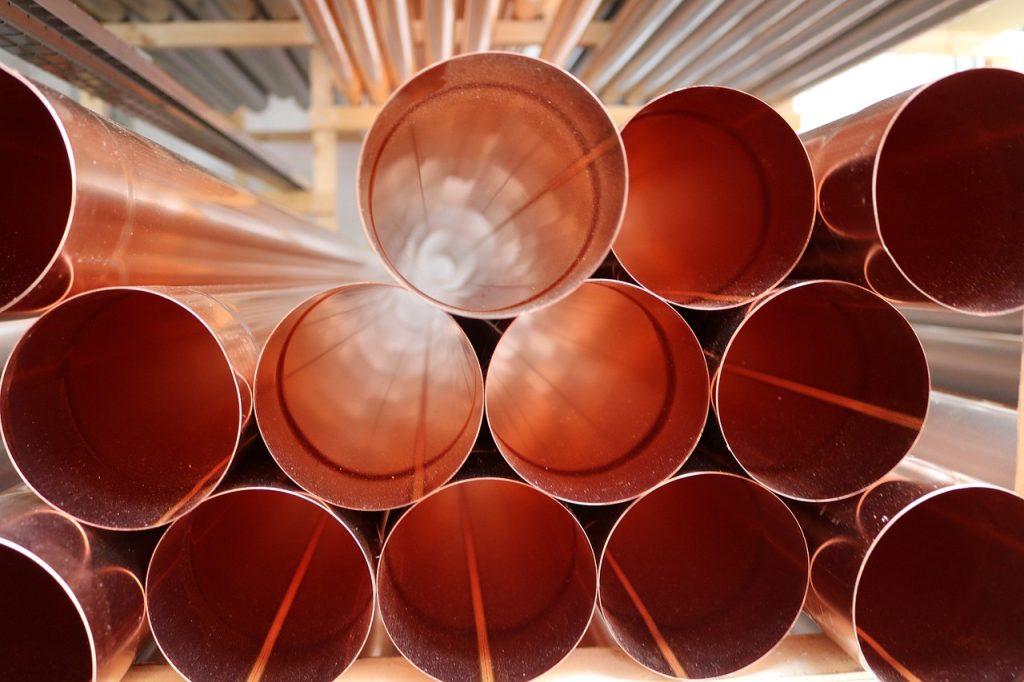Boost Your Workmanship with High-Performance Copper Products for Artisans
Boost Your Workmanship with High-Performance Copper Products for Artisans
Blog Article
Exactly How Copper Products Contribute to Sustainable Practices in Different Fields
In eco-friendly energy systems, for instance, copper improves the capability of solar and wind modern technologies, while its application in construction decreases waste through durability. As industries seek to adopt even more sustainable practices, the duty of copper could show critical in attaining environmental objectives.
Copper in Renewable Resource
Copper plays a critical role in the development of renewable energy innovations, acting as a vital conductor in different applications. Its exceptional electrical conductivity and resistance to corrosion make it an excellent material for electric wiring, which is crucial in solar panels, wind turbines, and energy storage systems. In solar photovoltaic systems, copper is made use of in the affiliations and wiring, making it possible for reliable energy conversion from sunshine to electricity.
In wind energy, copper is essential to the generators and transformers that convert kinetic power into electrical power, guaranteeing optimum performance and reliability. The need for electrical vehicles (EVs) is increasing, with copper being a vital element in batteries, electric motors, and charging infrastructure. The change to EVs substantially enhances the need for copper, as these lorries commonly utilize four times extra copper than standard interior combustion engine lorries.
As the globe seeks to alleviate environment modification and change to sustainable power sources, copper's duty ends up being progressively essential. The material not just boosts the effectiveness and longevity of renewable resource systems but additionally sustains the broader objective of decreasing greenhouse gas exhausts and advertising a sustainable future.
Eco-Friendly Building And Construction Materials
In current years, there has been a remarkable shift towards the adoption of environment-friendly building materials in feedback to growing ecological worries. This change is inspired by the demand for lasting options that minimize eco-friendly impacts while keeping structural stability and visual allure.
Copper, known for its longevity and recyclability, has become a key player in this field. It can be used in roofing, plumbing, and electrical systems, adding to power efficiency and minimizing waste. Copper's long life means fewer substitutes in time, more boosting its sustainability profile.
In addition, products such as bamboo, recovered timber, and recycled steel are getting popularity. These choices not only offer minimized ecological effect but likewise advertise source preservation. As building codes progressively stress sustainability, home builders and designers are incorporating these materials into their tasks, promoting advancement in design.
The boosting adoption of green construction products mirrors a wider dedication to sustainability in the constructed atmosphere. By focusing on these materials, the construction industry can substantially reduce its carbon footprint, line up with regulative criteria, and sustain a healthier ecological community for future generations. This fad notes a critical step towards a much more sustainable future in building.
Copper's Duty in Healthcare
Recent studies have actually highlighted the considerable role of copper in healthcare settings, particularly as a result of its antimicrobial homes. Copper surface areas have actually been shown to minimize the visibility of microorganisms, consisting of infections and bacteria, by as much as 99.9% within a short duration. This amazing efficiency makes copper an invaluable material for high-touch surfaces in health centers, such as doorknobs, bed rails, and IV posts, therefore adding to boosted infection control steps.
Along with its direct antimicrobial impacts, copper additionally contributes in the more comprehensive context of health center sustainability (Copper Products). By including copper into clinical devices and furnishings, medical care facilities can decrease the incidence of healthcare-associated infections (HAIs), which not just boosts client end results but likewise reduces the expenses related to extended healthcare facility keeps and extra treatments
Furthermore, copper's sturdiness and recyclability straighten with lasting methods, permitting responsible source management. As health care systems significantly focus on both person safety and security and environmental stewardship, the integration of copper products is ending up being much more common. This double advantage underscores copper's crucial contribution to a much healthier, much safer, and investigate this site much more lasting healthcare environment.
Sustainability in Transportation

Furthermore, copper's longevity and rust resistance contribute to the long life of transport facilities (Copper Products). In rail systems, for circumstances, copper components boost the reliability and efficiency of signaling and power systems, crucial for reducing hold-ups and energy usage. In addition, copper's function in renewable resource systems, such as solar and wind, supports sustainable transport options by offering tidy power for electrical transit alternatives
Investments in copper innovation not only foster sustainability yet likewise boost financial growth and job creation in eco-friendly industries. As markets aim to meet rigid ecological guidelines, the application of copper items in transport arises as a critical strategy in achieving sustainability goals and advertising a cleaner, more efficient future.
Copper and Circular Economic Situation
As the world increasingly welcomes sustainability, the role of copper in the round economy ends up being ever before much more significant. Copper's innate residential properties-- such as its conductivity, resilience, and recyclability-- setting it as a crucial product in a resource-efficient economic situation. The circular economy aims to reduce waste and optimize source usage with recycling and reusing materials, and copper master this respect.
The steel can be reused indefinitely without loss of high quality, making it an ideal candidate for sustainable techniques throughout various industries, consisting of building and construction, electronics, and renewable resource. By recovering and reprocessing copper from end-of-life items, markets can significantly minimize the demand for virgin products, thereby reducing ecological effects related to mining and handling.
Furthermore, the integration of copper into circular economy frameworks not just saves resources but also fosters technology. Services that prioritize copper recycling add to a more sustainable supply chain, boosting their competition while aligning with regulatory needs and customer preferences for ecologically responsible items.
Conclusion
To conclude, copper items substantially add to sustainable techniques across numerous markets. Their vital role in enhancing renewable resource technologies, promoting environment-friendly building and construction products, sustaining infection control in medical care, promoting lasting transport, and symbolizing the concepts of a circular economic climate highlights the convenience and relevance of copper. By integrating copper right into numerous applications, sectors can achieve greater effectiveness, reduce ecological impact, and line up with global sustainability objectives, eventually promoting a much more lasting future.

Copper's superb conductivity makes it a favored material in electrical car (EV) systems, enhancing energy effectiveness and efficiency. Additionally, copper's function in eco-friendly energy systems, such as solar and wind, supports sustainable transport services by giving clean energy for electrical useful link transit alternatives.
Their crucial role in improving eco-friendly power innovations, promoting eco-friendly building and construction materials, supporting infection control in healthcare, facilitating lasting transportation, and symbolizing the principles of a circular economic situation underscores the versatility and relevance of copper.
Report this page